Do you find water boring? Do you take having water for granted? Maybe you need to visit the Dusk to truly appreciate water… “Loadning Atelier Dusk Trilogy Review”
Type: Single-player
Genre: RPG
Developer: KOEI TECMO
Publisher: KOEI TECMO
Release Date: 28 Oct, 2019


Reviewer’s Note
I’ve reviewed quite a few Atelier tiles now and pretty much know what to expect from them. I decided to do this one a little differently. Rather than reviewing each Atelier Dusk title on its own, I thought it might be interesting to review them all at once and compare and contrast them all in one review rather than just linking back. It was actually a sizeable task and a bit more of a challenge than I was expecting but I think it worked out not too bad. If you like this kind of review, perhaps next time there is a Trilogy released all at once I will attempt to do it this way again! Also, that “Loadning” isn’t a typo that made it past our editor, it’s actually a typo found in game that amuses me. It’s the first thing you see when you launch Atelier Escha & Logy or Atelier Shallie. “Loadning system data” I’m not sure if they will patch that out once it is released or down the road, but when you play the game and see that maybe you will think back to this review and you will smile along with me!
Common Core Review
The three titles of the Atelier Dusk Trilogy each have similar separations in terms of gameplay as the other notable Atelier Trilogies. Not as game changing as Atelier Firis was to Atelier Sophie, but you can definitely see the gameplay evolve between games. Atelier Ayesha: The Alchemist of Dusk was a very simple game in comparison to the next two entries in the trilogy. It was the most basic experience you could have. The alchemy was easy to understand and perform, the time limits were generous and the map was easy to navigate. The next game Atelier Escha & Logy: Alchemists of the Dusk Sky added an interesting twist to the narrative. You actually get to play the game as either Escha or Logy. You will have the other one with you but there are subtle differences to the story depending on which character you are playing. I didn’t manage to finish both character’s stories due to time restrictions on getting this review out in a timely fashion but while the bulk of the game is common elements there is enough variation and alternate story points to make it interesting in the replay. The combat system has evolved more and alchemy has become a little more complicated. Atelier Shallie: Alchemists of the Dusk Sea stuck with the dual protagonist idea of its predecessor but I think handled it far better although they did make it a bit silly at the same time. Alchemy has become more refined and combat has been streamlined although admittedly I did prefer the combat in Escha & Logy just a little better.
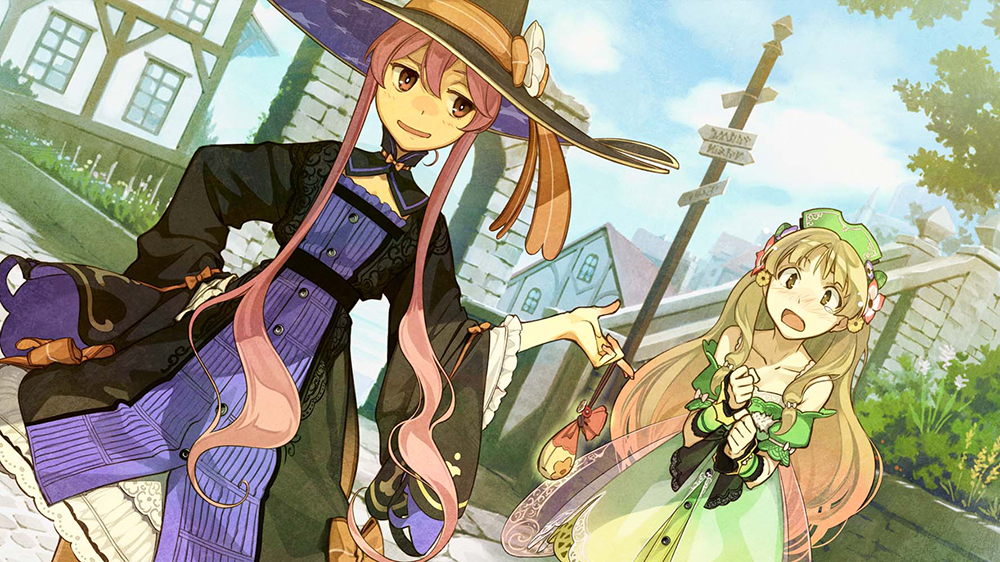
The Dusk Trilogy in general has an interesting story. It’s a little darker than your standard Atelier games in my opinion. Instead of a precocious young Alchemist trying to make a name for herself or help her town and then finding herself off on an adventure, it’s about a world where the Dusk is slowly consuming all and dehydrating the world. The story spans all three games; however, they are written in such a way that any one game can stand on its own with each game having its own story line and independent conclusion. Sure, characters from previous Dusk titles have a proclivity for showing up in later titles and people who have played the previous titles will enjoy running into the character again, but each character will reintroduce themselves as if you, the player, have never met them before. This allows them to blend seamlessly into the new story without the player feeling like they are missing something. Wilbell for example appears in all three titles. She is a witch-in-training or magician (depending on which title you are playing) who is trying to become a full-fledged witch. She isn’t very good at being a witch, she also is a bit of slacker and is often found trying to find ways to cut corners rather than working hard for what she wants. Come to think of it, although it may be frowned on a bit, that trait is found in an awful lot of characters both real and fictional. Character backstory and development has always been a strong point in the Atelier series where even non-titular characters have a fleshed-out backstory. Some of them may feel a little generic, but others like Wilbell are so fleshed out that you kind of wish you could have an Atelier Wilbell game…except she wouldn’t have an Atelier because she isn’t an alchemist… mind you neither was Ayesha, she was an apothecary who unknowingly to herself performed alchemy when creating medicine. It may not be easily recognized but alchemy comes in many forms. Moving on!
Atelier Ayesha: The Alchemist of Dusk
Atelier Ayesha, the first in the Dusk Trilogy as mentioned is pretty basic in terms of everything. Combat is simple, alchemy doesn’t really have a lot of fine tuning especially early on and the story advancement is pretty straight forward. You have three years to try to find your lost sister who vanished when visiting a nearby ruin. Since there is no trace of her anywhere, everyone thinks she is dead except Ayesha. She refuses to give up hope and truly believes her sister is still alive out there somewhere! After meeting a rather rude mysterious man who was busy and didn’t like her distractions, Ayesha puts her apothecary duties on hold and goes off on an adventure to try to find flowers for her lost sister.
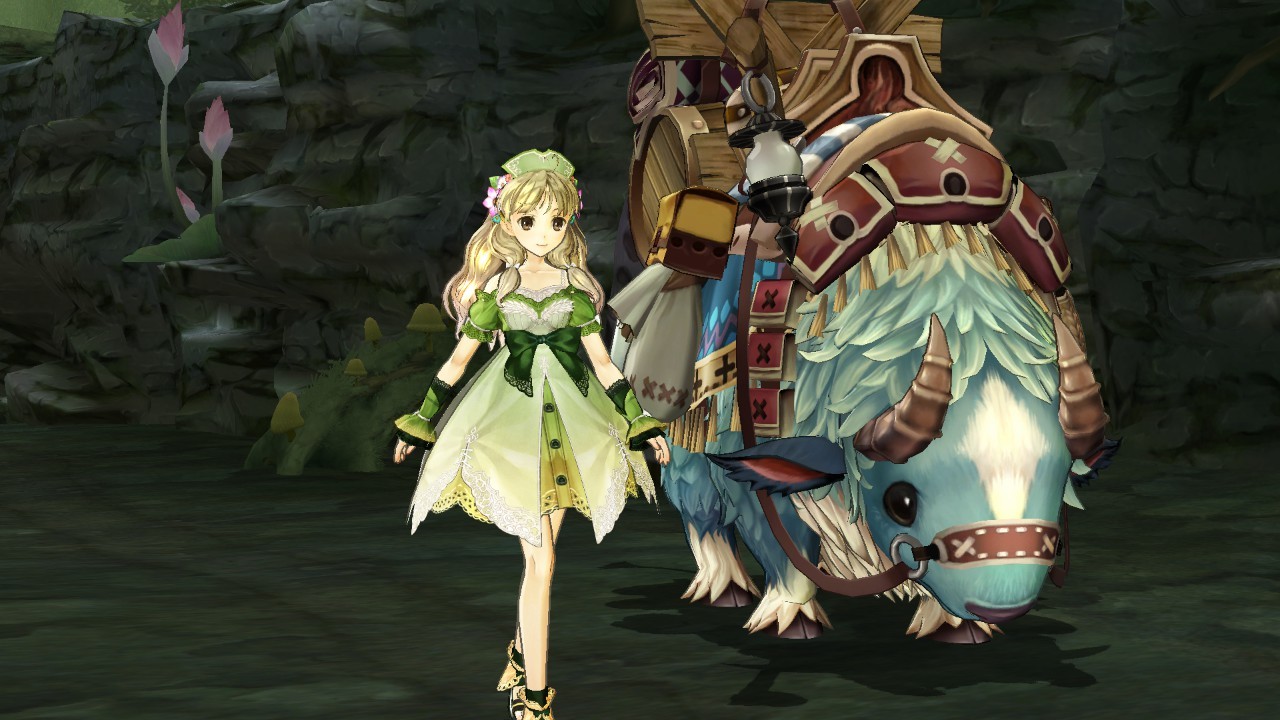
Time in this game goes by with every action you take out in the world map or as you perform alchemy. Time is mostly meaningless other than the timing of events. Sure, there is a time limit on the story, but even if you were to doddle your way through the game you will likely beat the game well before the third year is over. This relaxed time pacing makes this game a pretty decent entry point into the Atelier series. It introduces all of the staple elements of the Atelier titles without putting a lot of pressure on the player to get through the game in record speed. Atelier Rorona had an overly restrictive time limit. To my frustration and annoyance, I was constantly finding myself running out of time to complete tasks. It got to the point where I was not really enjoying it anymore. Upon replaying the game though, with better understanding of the mechanics of it, I found the time to be less restrictive and more of a nuisance than anything. It isn’t a title I would recommend anymore to be someone’s first Atelier title, unless they have a lot of patience, but it would still be one I would recommend playing to any seasoned Atelier fan. After all, who doesn’t like the charming Rorona. Atelier Ayesha on the other hand has such a lax time limit that you may even forget it has that restriction. Poor planning on your part can cost you your chance to visit the Bazaar or participate in a contest but that is the only real consequence of wasting too much time in the game until the third-year rolls around.
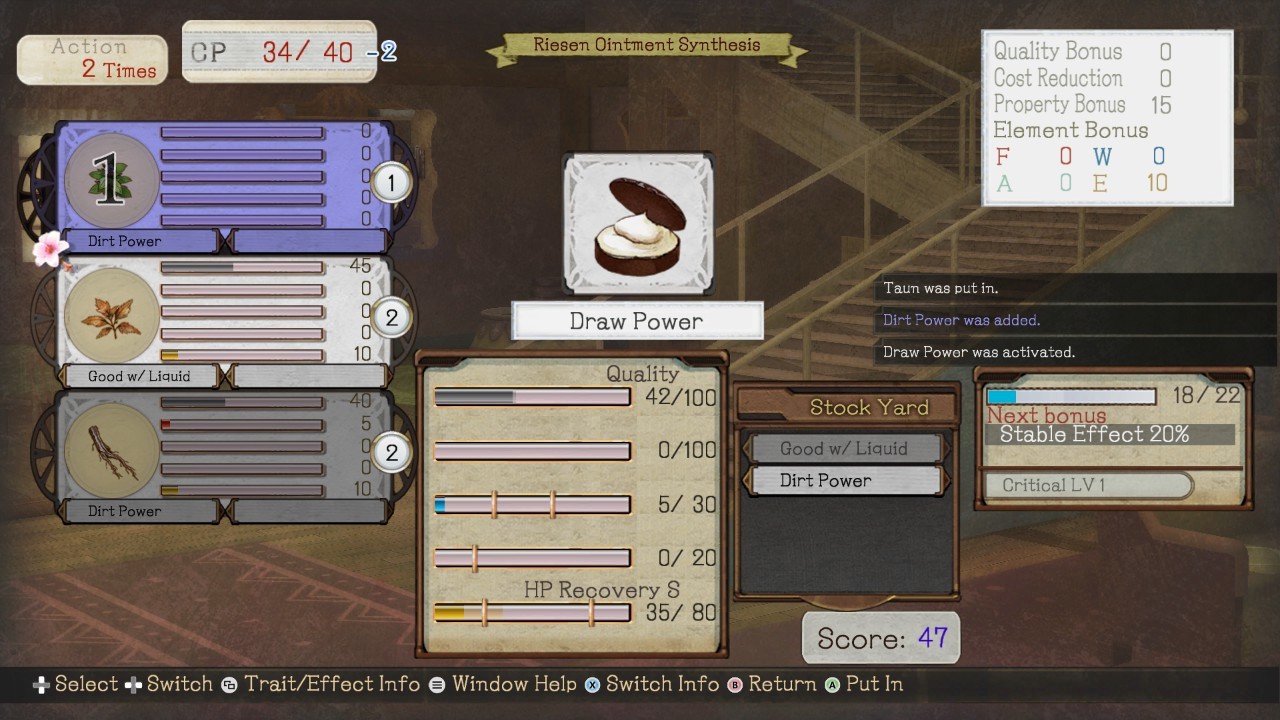
The combat system is a simple system where you have three characters out at any given time and their position on the battlefield impacts the amount of damage they can do. You can have them run around and do a back attack, support someone else or otherwise carry on a standard JRPG style turn-based fight. It was actually a very enjoyable combat system that only partially carried forward to the next Dusk titles. While I mentioned enjoying the combat in Atelier Escha & Logy a little more, there is something to be said for the deceptively simple combat of Atelier Ayesha. There was still plenty of planning and strategy you could do to help turn the tides of battle but the game was forgiving if you didn’t want to have to do that and even helped you out a bit.
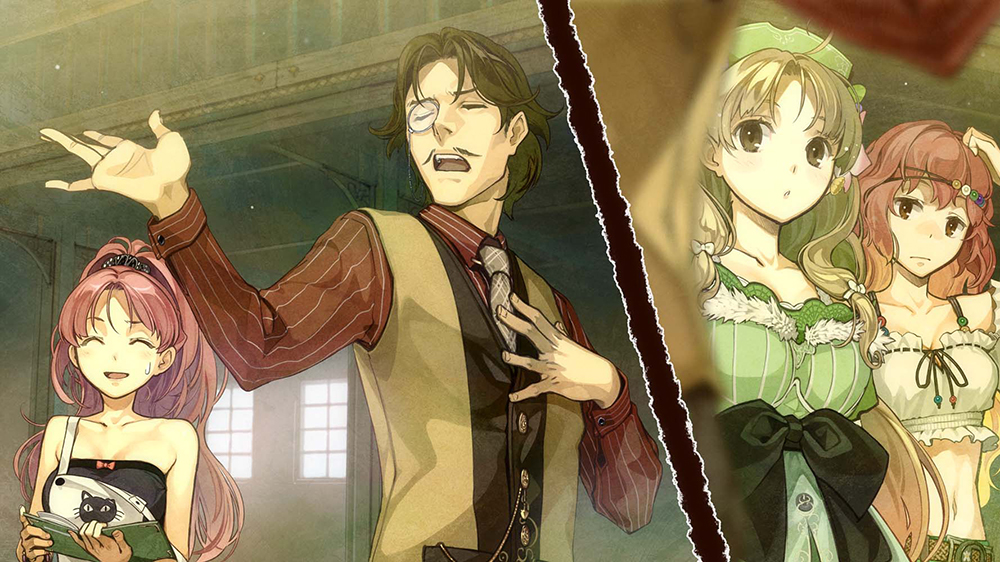
Harvesting resources is a little different in this title although not that drastic of a departure. For your combat team, you need to select which characters you will take with you. Your choice also impacts the resources you can harvest out in the field. Different characters have different strengths and weaknesses when it comes to collecting resources so revisiting the same area with different party members may yield some different materials. Additionally, multiple items can be harvested from the same node depending on how long you interact with it.
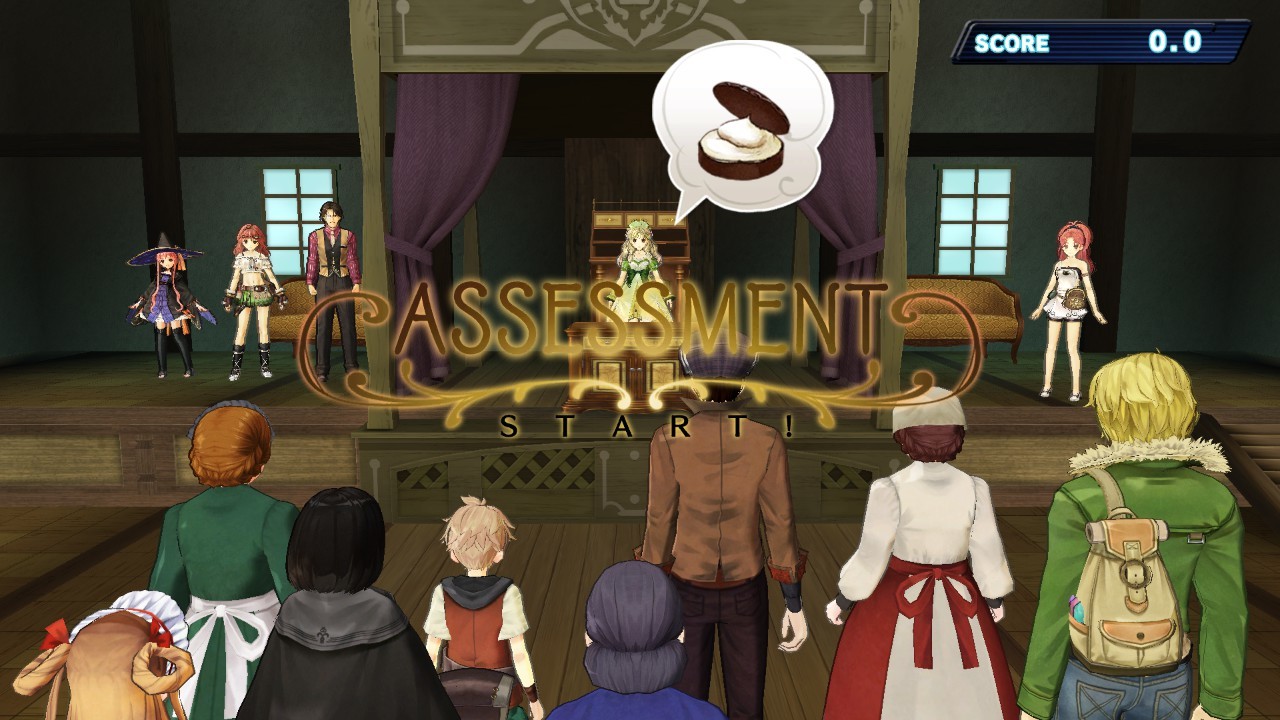
The only kind of annoying thing I encountered while playing the game was the event where you could compete to see who has the best item. It has a long opening routine and then is heavily influenced by the random number generator. Each item you can put up shows you two connected bars. The one bar shows you your guaranteed minimum score for the item and the other half of the bar shows you your potential maximum score. In the second event, I put up an item that had a combined bar total that far exceeded the nearest competition and went with it. After the very length reintroduction, despite having seen it the first time around and the long “voting” segment, I ended up losing by only a fraction of a point. Random was not nice to me. I reloaded my save and tried again. After text skipping my way through the introduction as much as I could, which still felt like it took a long time even when doing that, I ended up losing again this time by a much larger margin. I tried again at least eight more times, each time losing by a fairly large margin. I took to the Internet to try to find out if I was just misunderstanding the mechanic and the old guides I found (this was a Playstation 3 title originally) suggested that I had read the bar correctly and it was just bad luck. I crafted the item they suggested in their guide and still lost the event. Eventually, not too happily, I settled for second and moved on. A skip to end of event button would have made this far less painful and time consuming although that would have promoted the save scumming I was doing which likely wasn’t their intent for me to do in the first place! That or simply not caring that I didn’t get the gold medal that time!
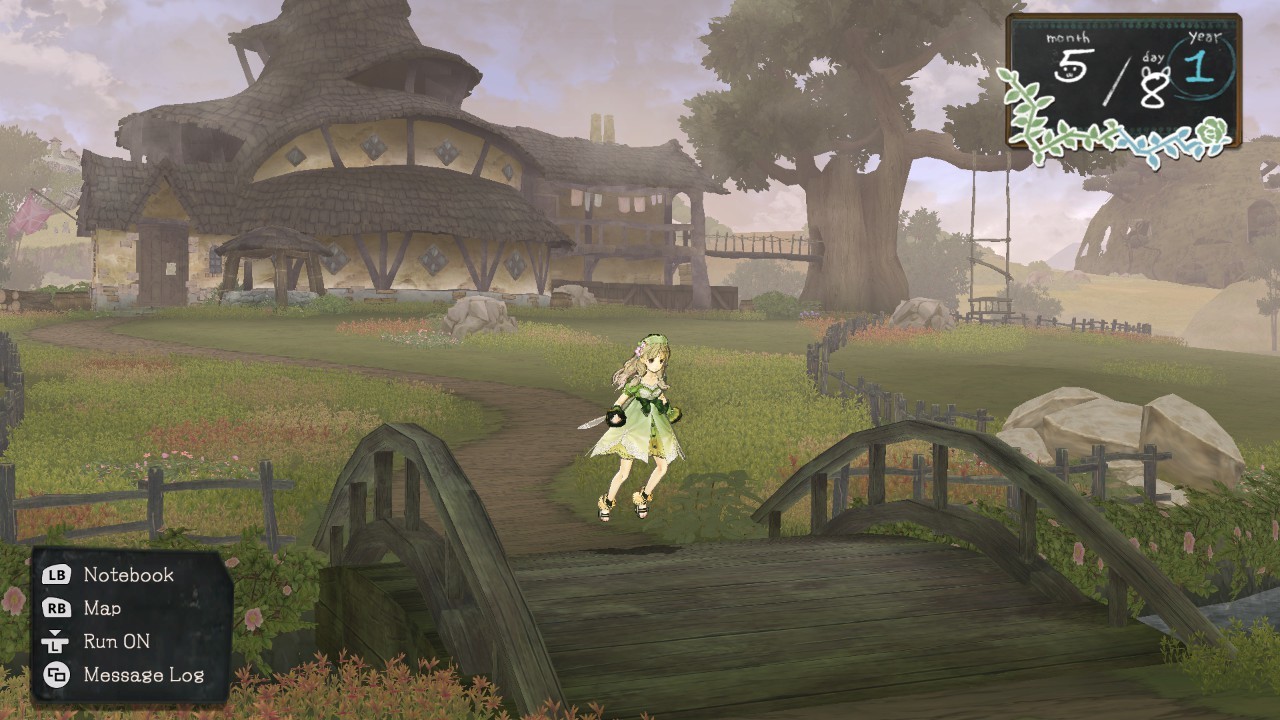
Overall Atelier Ayesha was a worthwhile entry into the Atelier series. There was enough going on that it served as a great starting point for the Dusk series. The combat while simple to understand and perform was enjoyable and the alchemy didn’t involve too deep of thought to achieve although taking care did produce better results.
Atelier Escha & Logy: Alchemists of the Dusk Sky
Atelier Esha & Logy is probably my favourite in terms of combat of the three Dusk titles. The combat has become a little more advanced with having both the main frontline team as well as the rear combat team. The combat system is far more complex than it was in Atelier Ayesha. While I enjoyed the somewhat simple combat systems used in Ayesha, I have to say I enjoyed chaining attacks together far more in Atelier Esha & Logy. As an example, assuming your gauge is suitably full, you could have a character attack, then be prompted with other buttons you can press to trigger other characters to join in to the attack. It doesn’t matter if they are in the front row or back row or if they recently attacked, they will jump right into the fray. Moving characters to the back allowed for them to rest and recuperate a bit while their comrades continue the fight. This multifaceted combat system allowed for a really enjoyable combat experience.
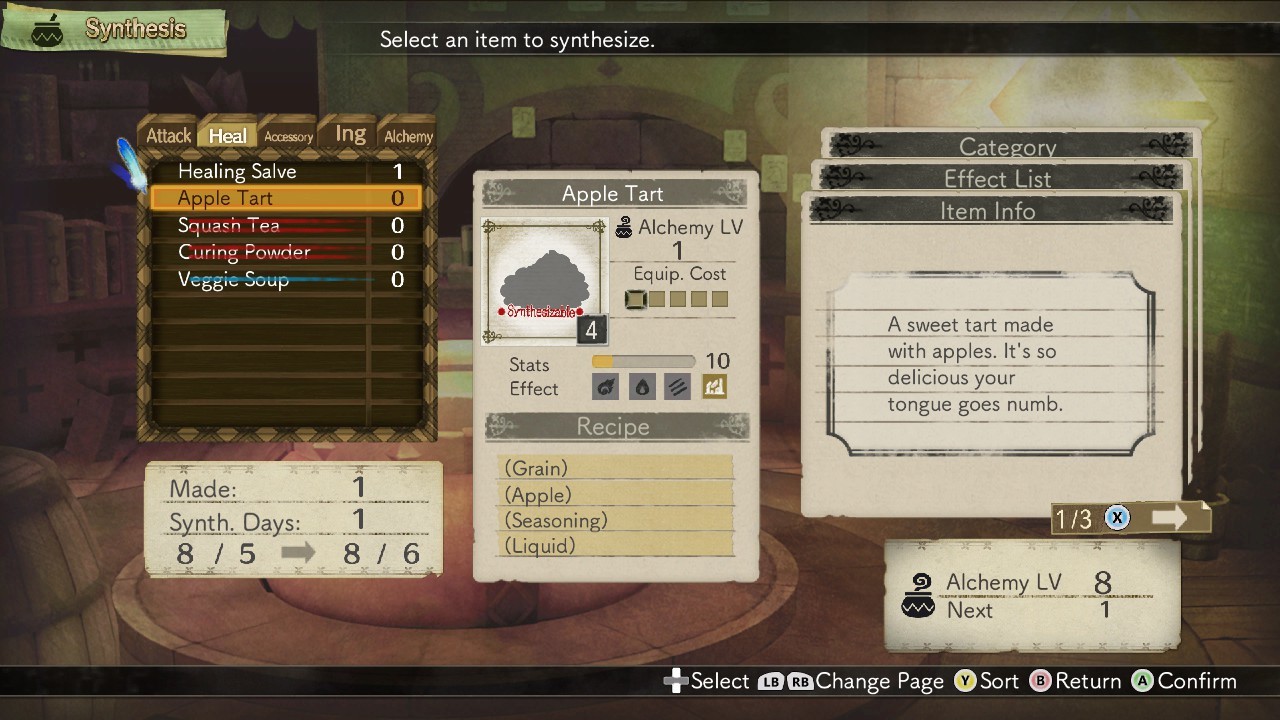
The alchemy on the other hand felt a little more complex. It was still the basic mix and match to make what you want but now there were extra factors at play. It took me longer to get a proper grip on the Alchemy this time around than it did with the previous titles in general but it was still pretty easy. Being able to reorder how items go into the mix didn’t make a lot of sense early on until I clued in to how it was working and finally understood how it could be important. It also doesn’t help that Logy doesn’t do traditional alchemy but imbues items instead. Escha is the traditionalist using her cauldron but Logy uses what basically is a forge to smash elements together to produce an upgraded item. It was an interesting dual system.
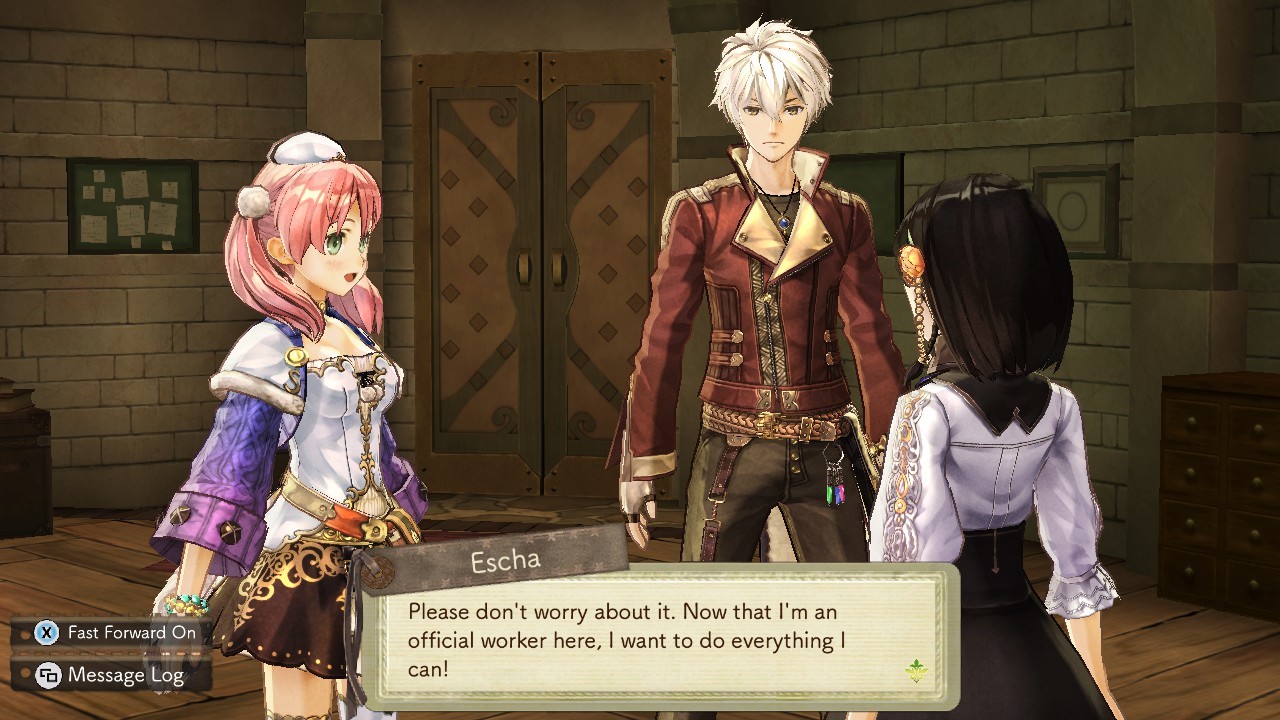
Speaking of dual systems with both Escha and Logy being playable, it did make replaying the game more interesting. As mentioned earlier, while their stories are entwined to the point where there is a fair amount of overlap, there are enough variations that playing as each character still felt mostly worthwhile. For example, the opening scene and mission are different for the two characters even if they ultimately end up at the same place. The opening events experienced by Escha prior to meeting Logy while playing as Escha were different than those experienced by Logy when playing as him. It was an interesting experiment they pulled by having both titular characters as being playable and having that choice make minor differences to the story.
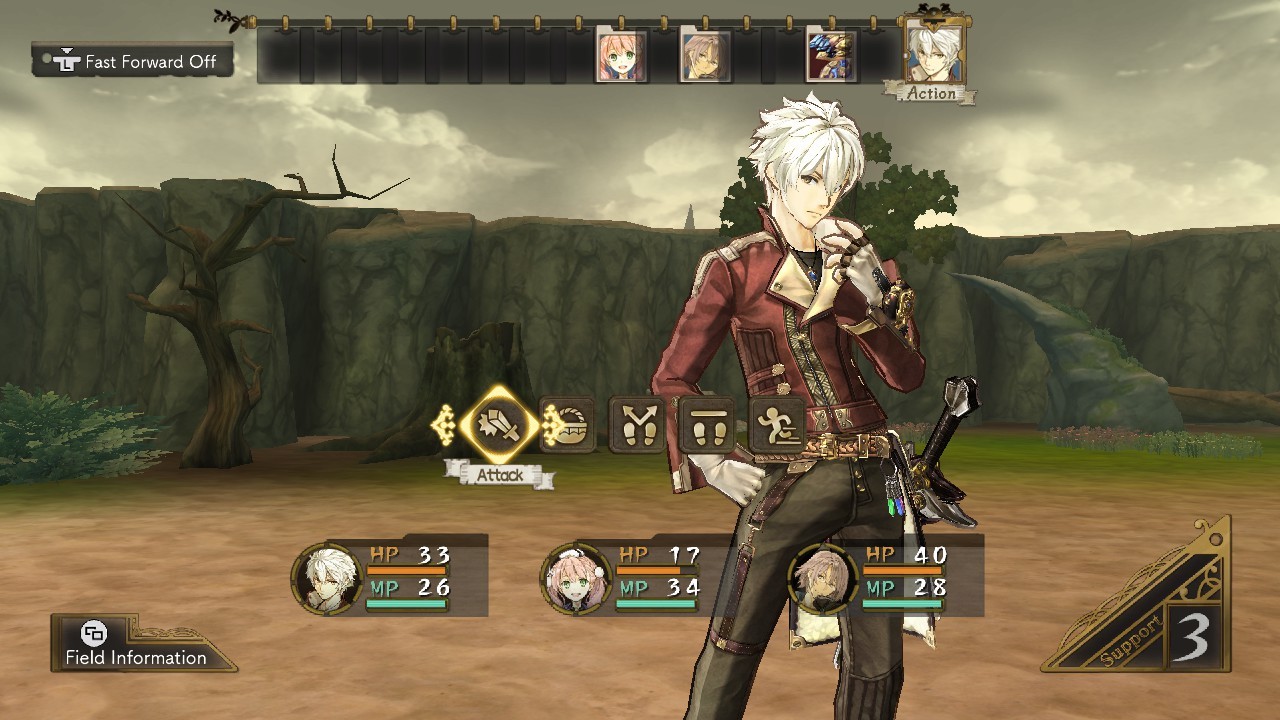
Exploration takes a bit of a different turn here. Rather than just going to a node, working your way through it and finding yourself back on the world map like you did in the previous game or the following game, you actually enter a submap. This submap has multiple locations for you to visit, each new node location typically unlocking after leaving the previous one. This allows for a little more simplified world map and makes each node zone seem like more of an epic adventure to explore rather than just a tunnel to walk through like in other Dusk titles. It also allows for a new map mechanic where certain paths are blocked until you complete a certain action. It could simply be finishing the preceding area, but it could also be blow up a rock or fight a stronger enemy. For the rock, as an example, you will need to use your combat explosives to destroy it, unlike in say Firis where bombing a rock with too weak of a bomb will lead it to restoring to full health, the bomb retains the damage allowing you blast it repeatedly until it is gone. This of course wastes explosives that could have been used in combat, but once the area is opened it remains open even upon return visits.
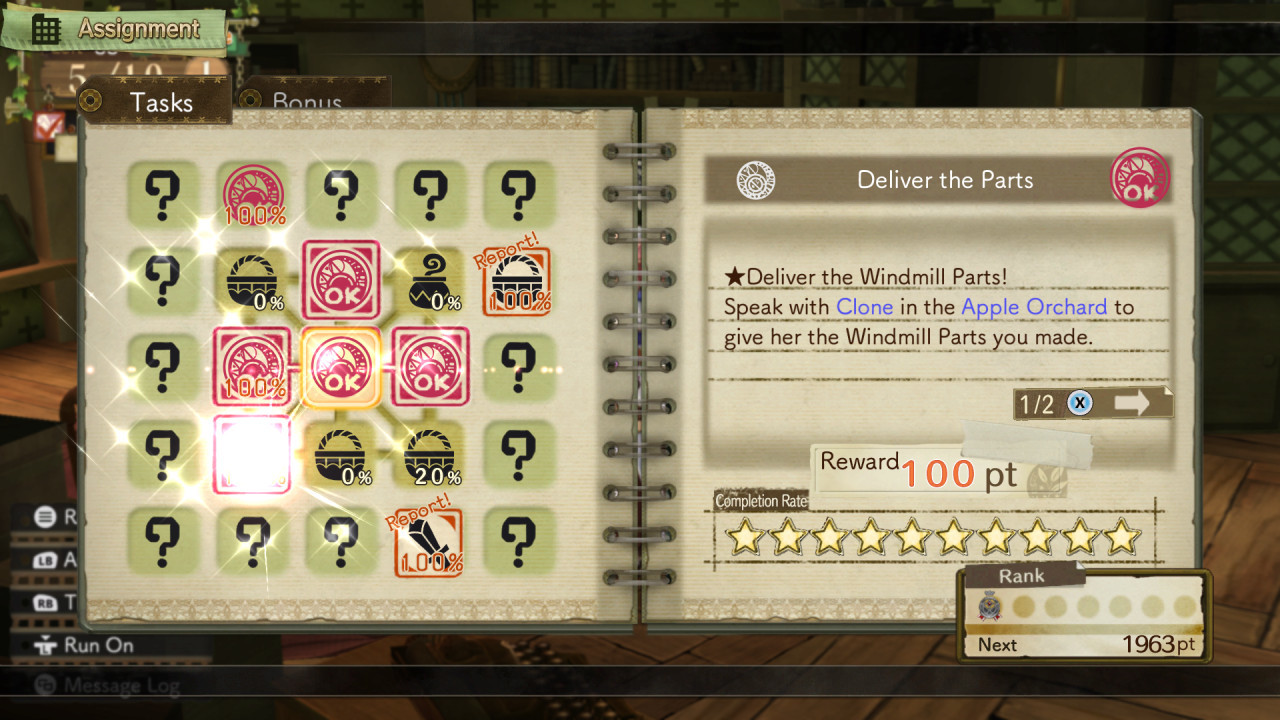
Time in this game takes a little bit more of a front seat but even then, it is not really that big of a concern. You have to complete the chapter’s main task within the generous time limit in order to move on to the next chapter. You also have a bunch of secondary and tertiary tasks you can complete. If you complete them all you can advance time to the next chapter without having to draw it out, but you likely are better to use that time to gather more materials or raise your alchemy skill simply to avoid having a time crunch happening next time due to level or resource shortages.
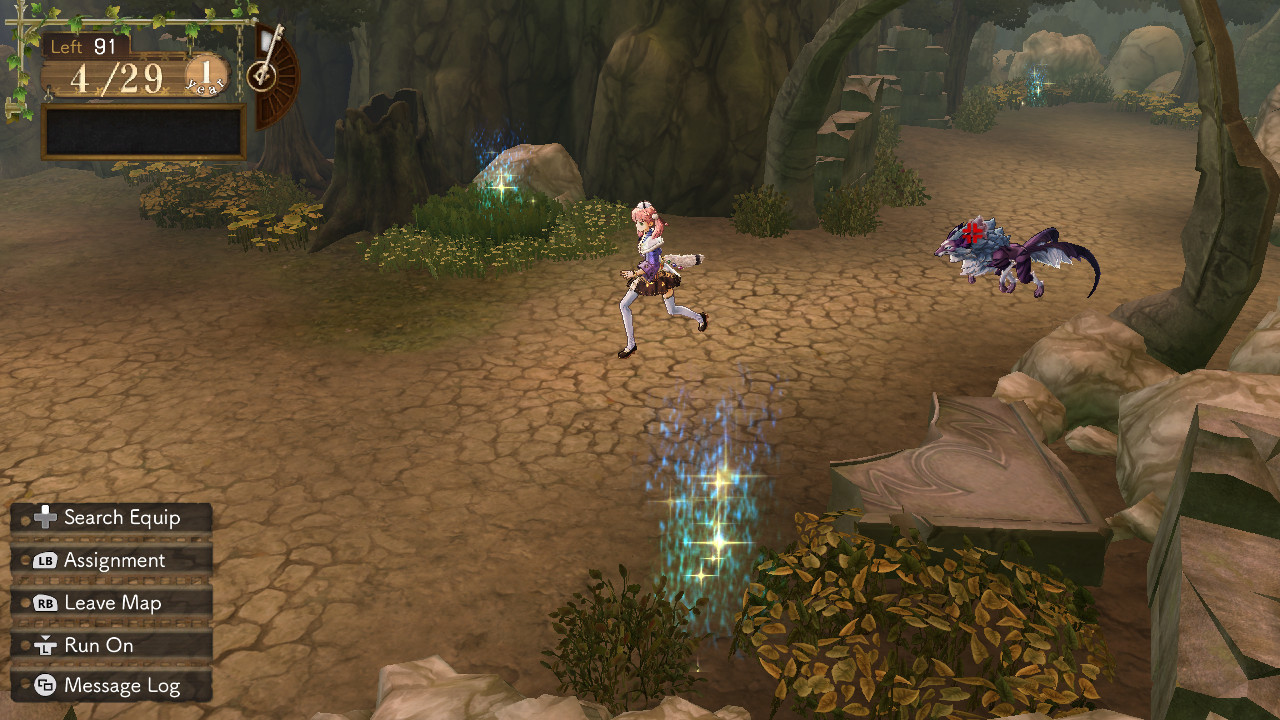
Overall Atelier Escha & Logy does feel like a refinement over Atelier Ayesha and has arguably the best combat of the three dusk titles. The dual protagonist was a neat idea although it didn’t really add that much variance to the story. It did make the replay more enjoyable, but unless you were doing it for completionist sake, the little changes to the story didn’t really warrant the replay just to see them. If you are replaying the game after a long gap, you may not even really notice the differences in the story.
Atelier Shallie: Alchemists of the Dusk Sea
Atelier Shallie is the third chapter and currently final chapter of the Dusk Trilogy. Atelier Shallie takes what the previous two games had and distills it down to the most streamlined experience. It likely is the best of the trilogy in terms of ease of gameplay and because it handles its dual protagonist much better than Atelier Escha & Logy did.
Reader: Dual Protagonists? Clearly the reviewer has gone mad since it clearly only has one name in the title! Or could it be the reviewer is confusing titles? Without a doubt, mistakes are bound to happen when you attempt to review three epic lengths games all at the same time!
Reviewer: No, if you look at the title again, there is clearly an s on the end of Alchemists! I did mention in the common core of the review that this game does handle the dual protagonist in a kind of silly way. Both characters are named Shallie! I mean it isn’t that weird, I have met other people who have same first name as me. In this case Shallie is a nickname rather than their proper name. Although you may wonder why they were given such similar names and it may seem a bit confusing to begin with, Shallistera and Shallote are their proper first names. On with the show!
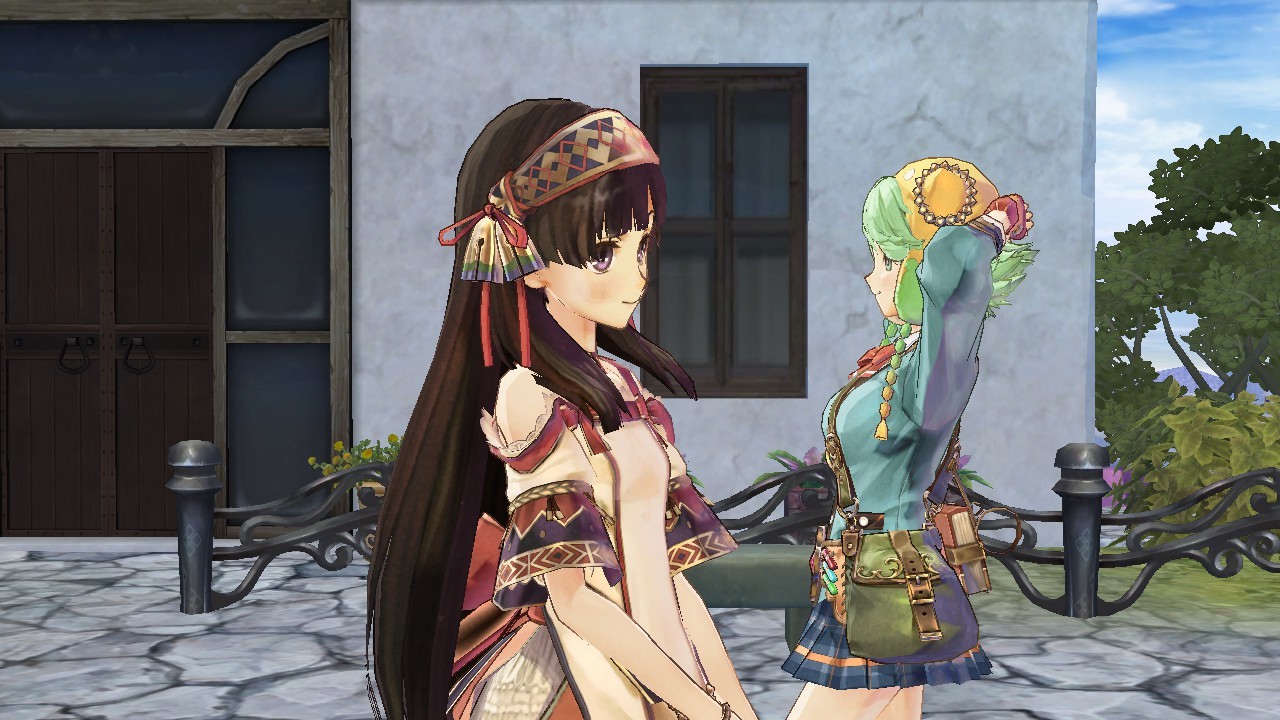
The differences between Shallies… Sahlli… the protagonists are actually far greater this time around. In the previous title other than some dialogue and scene changes the only thing separating the protagonists was how they performed alchemy and even then you just basically “asked the other character to do the alchemy” and then controlled it yourself. This time around the stories diverge much more as well as the field abilities of the characters have changed. The stories of the protagonists are not even linked together until you are a decent way through the game. Sure, they bump in to each other occasionally but they remain separate until they are ultimately brought together. Escha and Logy are basically pushed together in the first few minutes of the game where as you pass through quite a few chapters before the characters entwine in Atelier Shallie. Even when they are entwined there are enough differences to keep it interesting. Depending on who your protagonist was impacts their abilities later on. For example, Shallote’s Mix ability appears to be absent when you are playing as Shallistera even if Shallote is in your party. The field abilities also drastically differ. Shallote can go fishing with bait or clean the floors looking for extra items where as Shallistera uses dowsing to find extra items. These differences are enough that replaying the game will almost feel like you are playing an entirely different Atelier Dusk title at least until the stories merge.
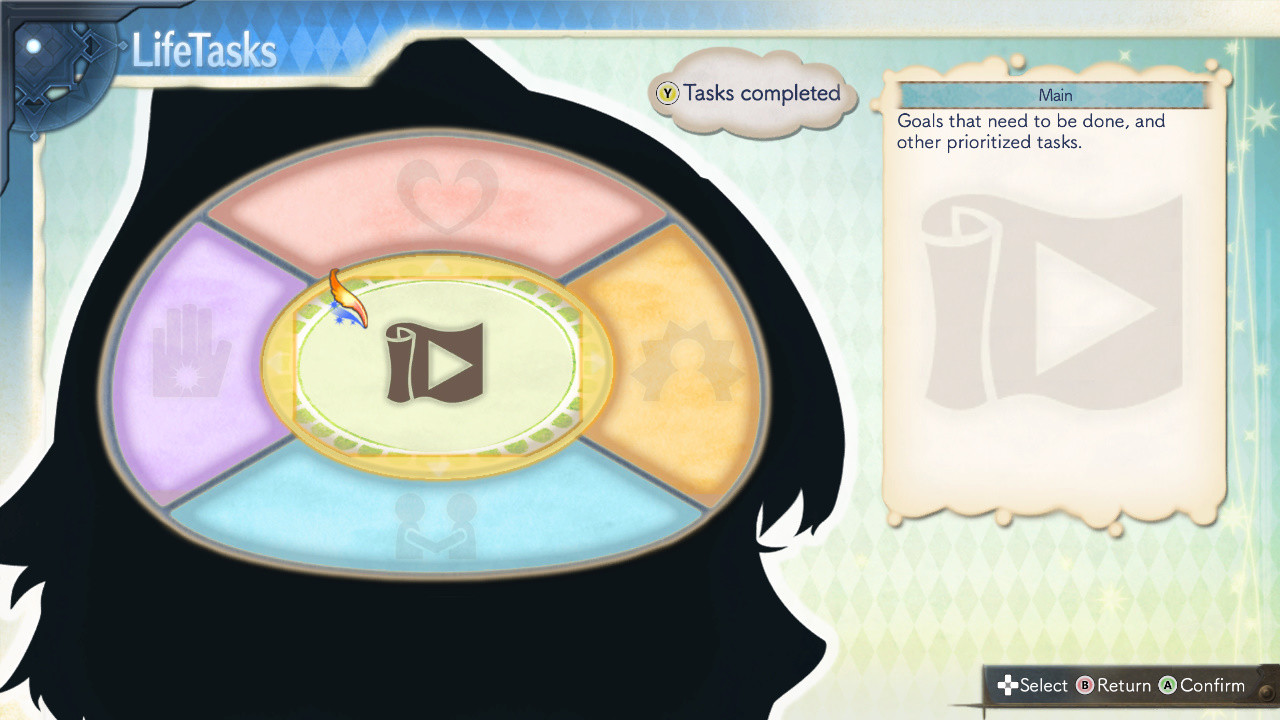
There is one major change to the gameplay that I do welcome but at the same time find myself oddly a bit lost without. The Time system doesn’t exist. The previous two titles had you worrying a little about time in the back of your mind as you worked your way through an area. Do you really want to harvest that flower and burn off a day or do you want to just leave it alone to avoid overshooting your deadline or missing an event going on someplace else? This time around it is more like: Run to a faraway place just to collect one item rather than spending 5 Cole to buy it in the store? Sure, that seems sensible! I mean the world is only slowly dying away due to the drought caused by the encroaching dusk, but spending four months picking flowers? Sure, why not! Instead of deadlines to complete certain tasks, the system has changed to a Life Goals system. This basically has you completing enough tasks that you become ready to move on to the next chapter. Each chapter has some new story elements to it so it is a good idea to advance when you can since you don’t need to worry too much about running out of time and who knows, maybe the task you want to complete now will help you complete your tasks for the next chapter anyway!
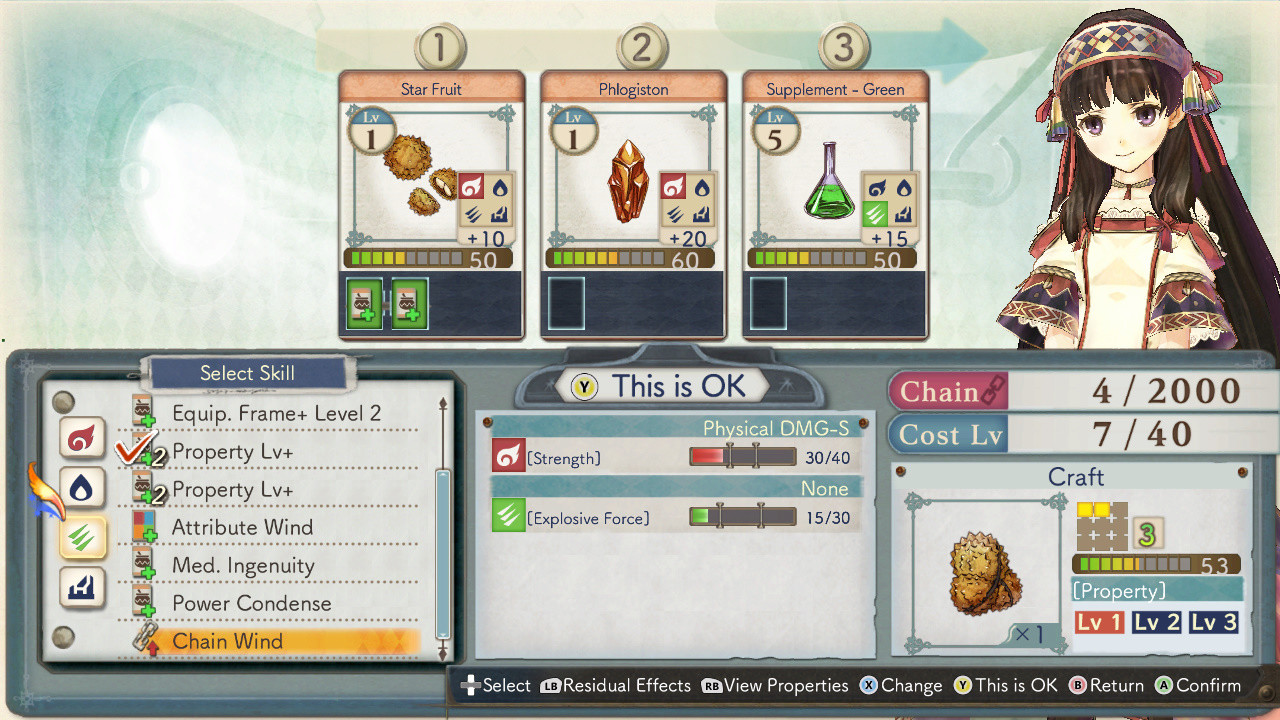
Alchemy has become even more streamlined to the point where all the enhancements you gain through experience are easy to understand and utilize. The standard mixing suitable items is still there but having to put them in in certain orders is kind of replaced by a kind of token system. Depending on what elemental affinities the items have will lead to what tokens you can add to your mix. These tokens allow you to enhance and refine your end result item in such a way that you can push it over certain thresholds that you couldn’t have reached with just the regent items alone. I liked this version of alchemy best of the entire trilogy although it was a bit fiddly always having to worry about using the tokens to maximize results. I still kind of miss the Atelier Firis Alchemy though.
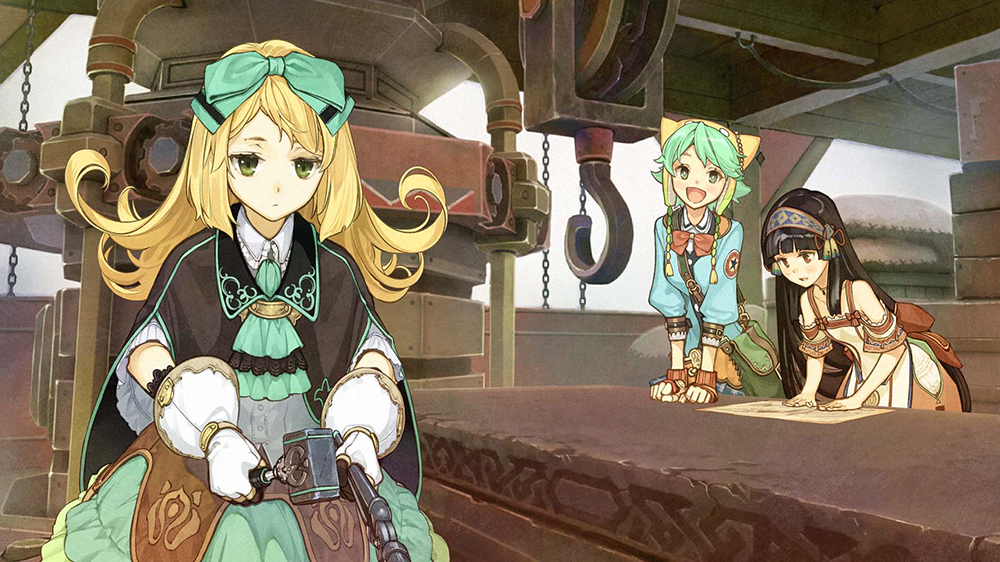
Combat has been further refined. The standard breaks are still here where if you attack something enough it will lose its turn and you get to keep on bounding on it, but there is another element at play too, the Burst system. If you do enough damage without taking too much damage because taking damage reduces the gauge, you will enter Burst mode. Burst mode magnifies your damage output allowing you to more easily dispatch hardier enemies without resorting to reducing the difficulty settings of the game. Rather than having all characters have the ability to join in the attacks at any given moment they have a more refined trading places system. The front-line characters no longer join in to keep the chain alive and the back-row characters will rush up and attack then remain up front moving the former front row character to the back row. This system is a more refined version of what was in the previous game and does make a lot more sense. While I admit while playing Atelier Escha & Logy I did enjoy having my strongest characters basically get multiple turns in a row due to them doing supporting attacks, it really did break with the whole turn-based combat theme of the series. With it being more limited in Atelier Shallie it made it seem more like a true support system rather than just a throw everything at the enemy and see what sticks kind of battle.
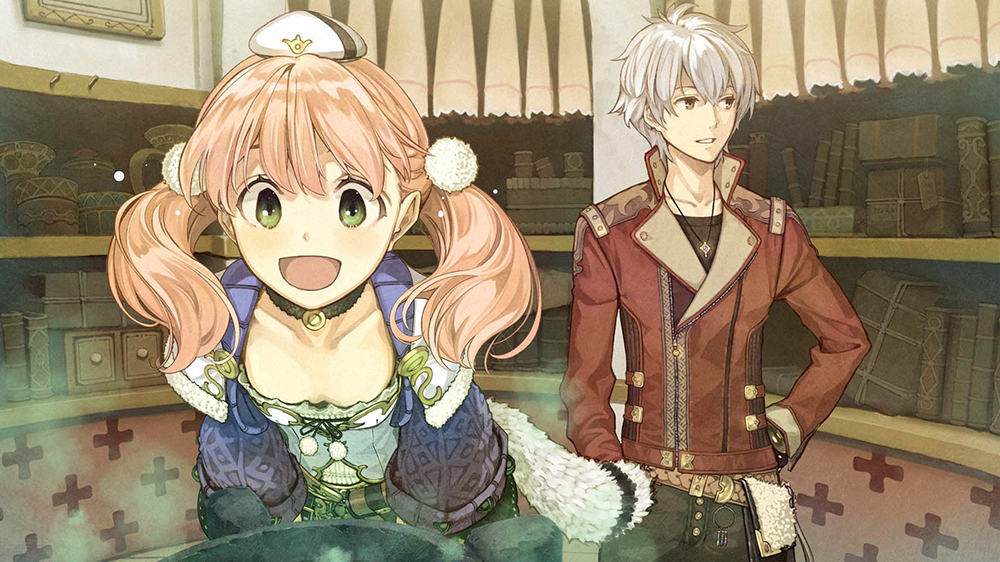
Experience gains in Atelier Shallie I have to say is a bit weird. I’m not sure if it is because I was playing the pre-release version and it happened to be buggy or if it was by design as it likely could be related to me completing various tasks and it just holding the experience points until I gained some in combat. I played on Hardcore mode because why not make the game needlessly harder than it has to be while trying to review the game in a timely fashion. As such it felt like even regular battles took a while and the experience gains afterwards seemed to be insignificant most of the time especially if you are repeatedly visiting an area to harvest materials. The thing is that it feels like it takes forever to level up at times, but then suddenly you gain multiple levels after a single battle. My character levels made several large leaps as I played and those gains occurred after fighting what seemed like rather insignificant enemies. I’m not entirely certain why those jumps occurred but other than unlocking new abilities, the level really didn’t make the battles wrap up any faster. Regardless of the reasons for it, I can’t say that I enjoyed the almost cheat-feeling rapid leveling that occurred sporadically as I played. The more organic leveling of the previous games was preferred. This could very well have been a glitch/bug that has been since squashed though.
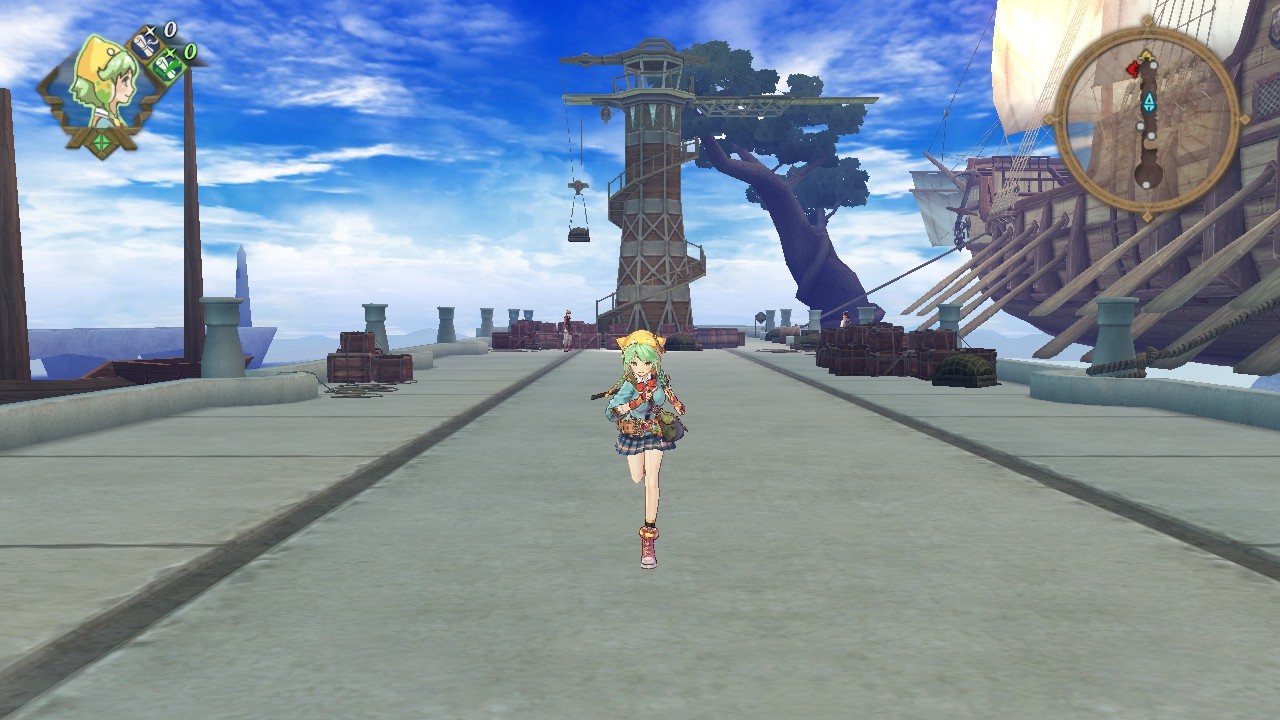
Exploration in this game is back to being similar to Atelier Ayesha where each zone you can visit is a single node on the map. Completing an area may unlock another node but it will open up on the world map. Something that is new though is that some areas can have special conditions that can impact an area. You will see a special ring around the node on the map that will indicate what is happening there such as there is reduced monster activity in the area right now or the shops have less items. It adds for an interesting little twist to what would otherwise be a kind of plain world map navigation system. The game also makes it very easy for you to find where the materials or enemies you need to harvest for your requests can be found. Little markers point at nodes that contain something of interest and inspecting it will tell you what is there. Even if you have never visited the area it will still get flagged but it will just show question marks instead of the name of the item/monster in question. The other titles also flagged things of interest on their maps too but I feel Atelier Shallie did it best.
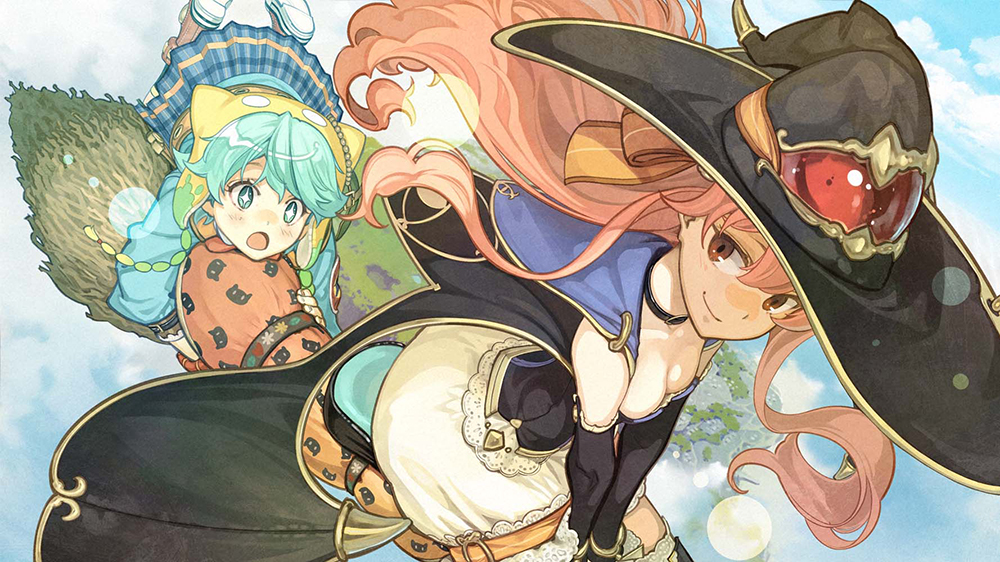
Overall, while Atelier Shallie feels like the best of the three Dusk titles although arguably Atelier Escha & Logy had more interesting combat and map navigation systems. The dual protagonist concept was handled far better this time around than how it was with Escha & Logy. As mentioned, it almost felt like you were playing a different title due to how separated the two characters for the initial chapters of the game were depicted. Sure, there were a lot of common locations but even how you interact with them are different. Replaying Atelier Shallie felt far more worthwhile and interesting than replaying either of the initial two titles.
Graphics
All three games look very similar in appearance so I feel it is safe to speak to them mostly collectively. Atelier Ayesha did look a little less vibrant than Atelier Shallie did, but that is likely due to Atelier Ayesha being released two years earlier than Atelier Shallie. All three titles look great though for their age. As one who has played other Atelier titles would come to expect, the character models are all very detailed and have the idiosyncrasies of their personalities reflected in their clothing. The weapon models change to reflect the current one being wielded which is always a nice touch. Some of the weapons they use are also quite creative such as Shallistera using a ship’s bell as her starting weapon which is a departure from the typical staff of an alchemist that other Atelier series games feature. There are even some anime style videos tucked into the game for the player to enjoy.
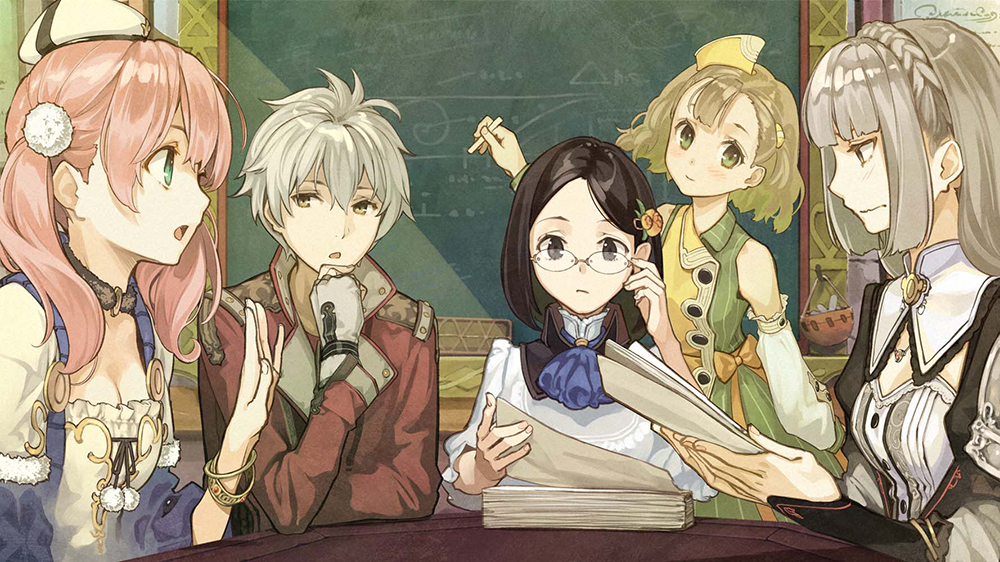
The various locations visited have enough variations to them that they are enjoyable to visit. One map that is memorable from Atelier Shallie has you walking up bones to collect harvestable resources. The enemies roaming the maps are diverse enough to easily tell them apart and there is enough variations to keep them interesting. Sure, there are recolours but recolours are pretty much a staple of any JRPG or video game in general.
Audio
I’m at a loss for words here. It’s almost become a trademark of me commenting in this section about the voice acting sounding nice but being in Japanese so my not knowing what they are saying properly. I’ve even made jokes saying they could be insulting me, the player, non-stop and I would just sit there thinking it sounds nice. That isn’t the case here! This is an older Atelier title and the older Ateliers for a time were almost fully voice acted in English! It was a weird experience when I first started playing Atelier Ayesha as I started my usual train of thought of hey, I can understand them speaking, I must be getting better at understanding Japanese and then it donning on me that the reason I could understand them so well was that they were, in fact, speaking English. It then seemed wrong to me and I turned on the Japanese language track instead but quickly flipped it back to English again because I wanted to revel in them speaking in English again. All of the voice actors did a wonderful job, in both languages. The personalities of the characters were reflected well by the voice actors.
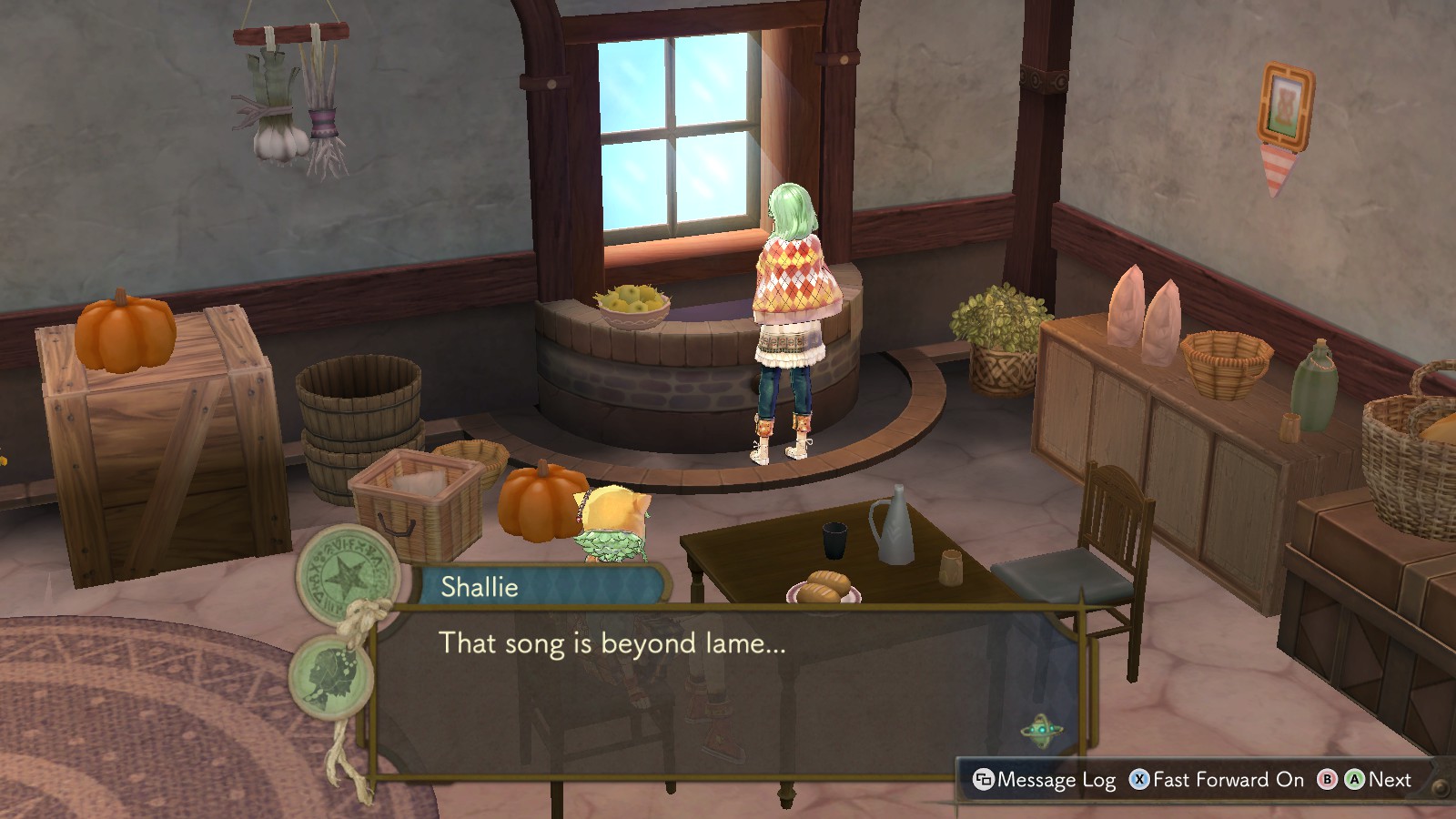
The background music was splendid as usual although the default settings have it set far too loud to the point it almost drowns out the character’s talking. The soundtrack of an Atelier title is always full of mood setting music that feels like something you may even want to listen to just for the sake of enjoying it rather than just as an enhancement of the game. The sound effects and character’s repetitive utterances in battle never really get tiresome despite how frequently they are repeated. They help keep the game from feeling sterile while at the same time just kind of blur into the finer details of the game. Losing them would definitely take something away from the enjoyment of the game so the tradeoff of having to hear them repeated so often is worthwhile.
Controls and User Interface
The controls are simplistic with the buttons required to be pressed being displayed on the screen to help the user out. The menu systems are pretty easy to navigate although sometimes you might look for something in the wrong menu. If you buy/make a new accessory as well as craft yourself a new and improved combat item you will need to enter two separate screens to equip them both. It’s not that big of deal and the way the game breaks those screens apart does make sense. The game also attempts to not give too many details as to not overwhelm the player. If you want more information you can press a button to read more about something. The way the information is given to the play varies between titles however in all cases it is very easy to read and understand what the game is trying to tell you.
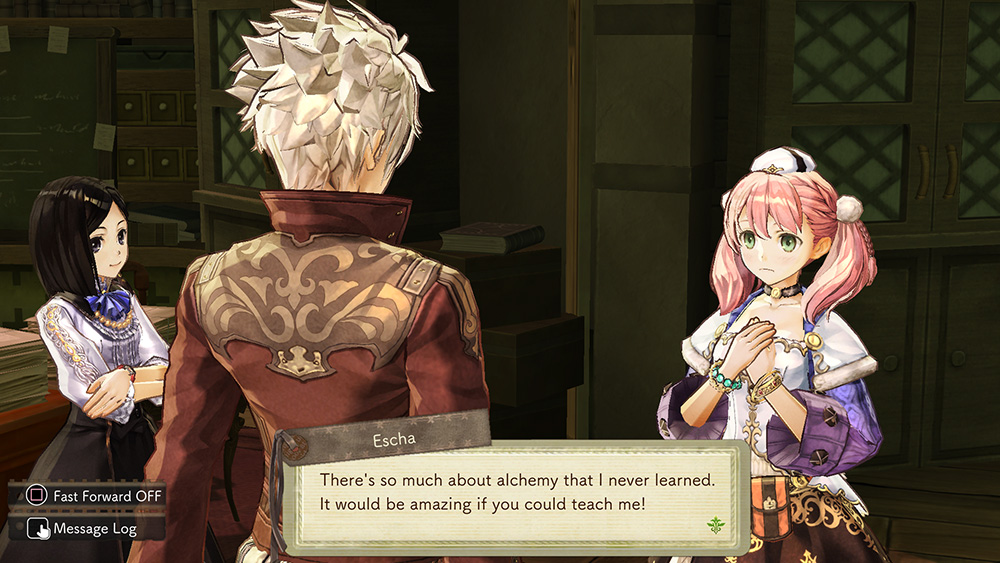
There are only two things that are even a little complex but even then, they are not that bad. Firstly, the way alchemy is performed could be a little confusing for anything beyond the basic plonk the stuff in and be done with it. The games do their best to ease you into it though by slowly adding new functionality and then explaining it to you as it becomes relevant. There is a help menu that is easily accessed if you ever need a refresher on something. The other thing that was oddly a challenge was figuring out how to sell less than your entire stack of an item. I was playing using my gamepad and just couldn’t figure out how to break up a stack of items until I clipped a shoulder button and saw the amount change. It actually is quite reasonable to utilize those buttons for that purpose but it was a bit of a departure from how other Atelier titles handled it. Typically selecting the item would prompt you for how many you wanted to sell instead of just selecting the entire stack automatically. Selling various items at the same time when breaking down some of the stacks was also a minor challenge.
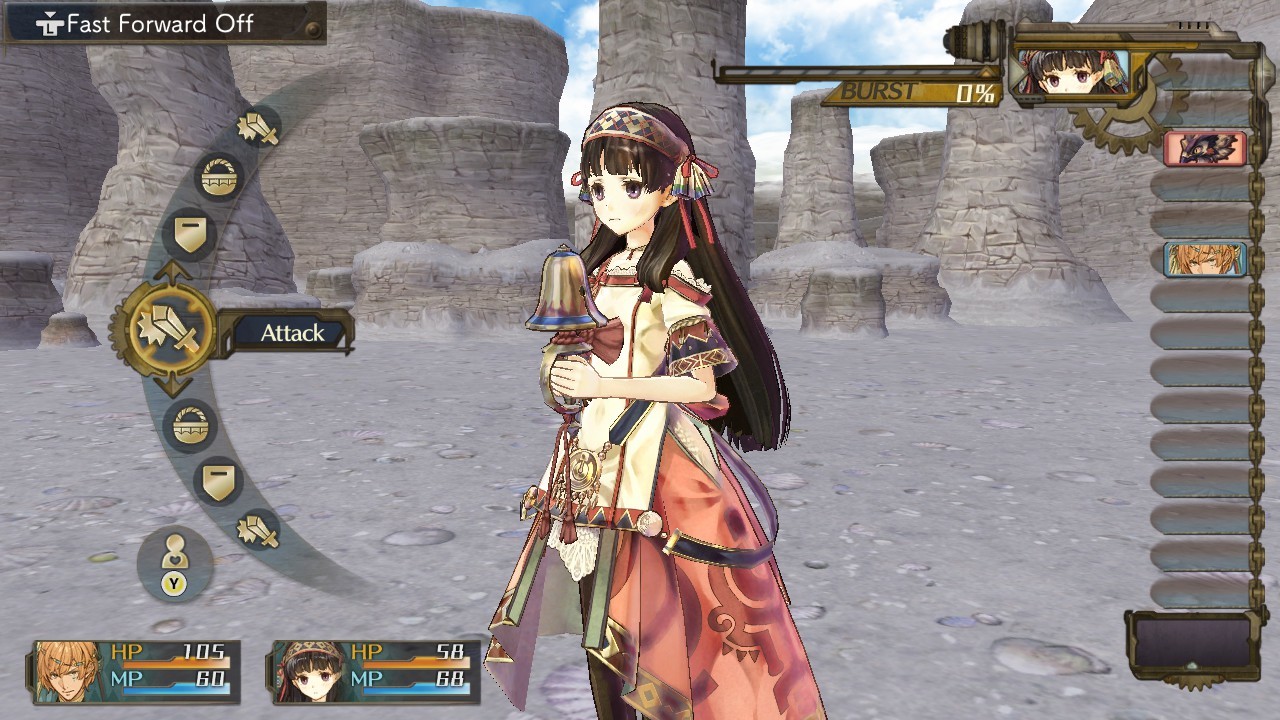
Overall though the user interface is quite well thought out and works well for this sort of title. The controls of all three games for the most part were very easy to use and while there were some pseudo quick time elements where you had to press the button within a small time limit to trigger the supportive action. It wasn’t so quick that it didn’t give you sufficient time to react. I often found myself pressing the cancel button just to move on rather than letting it time out.
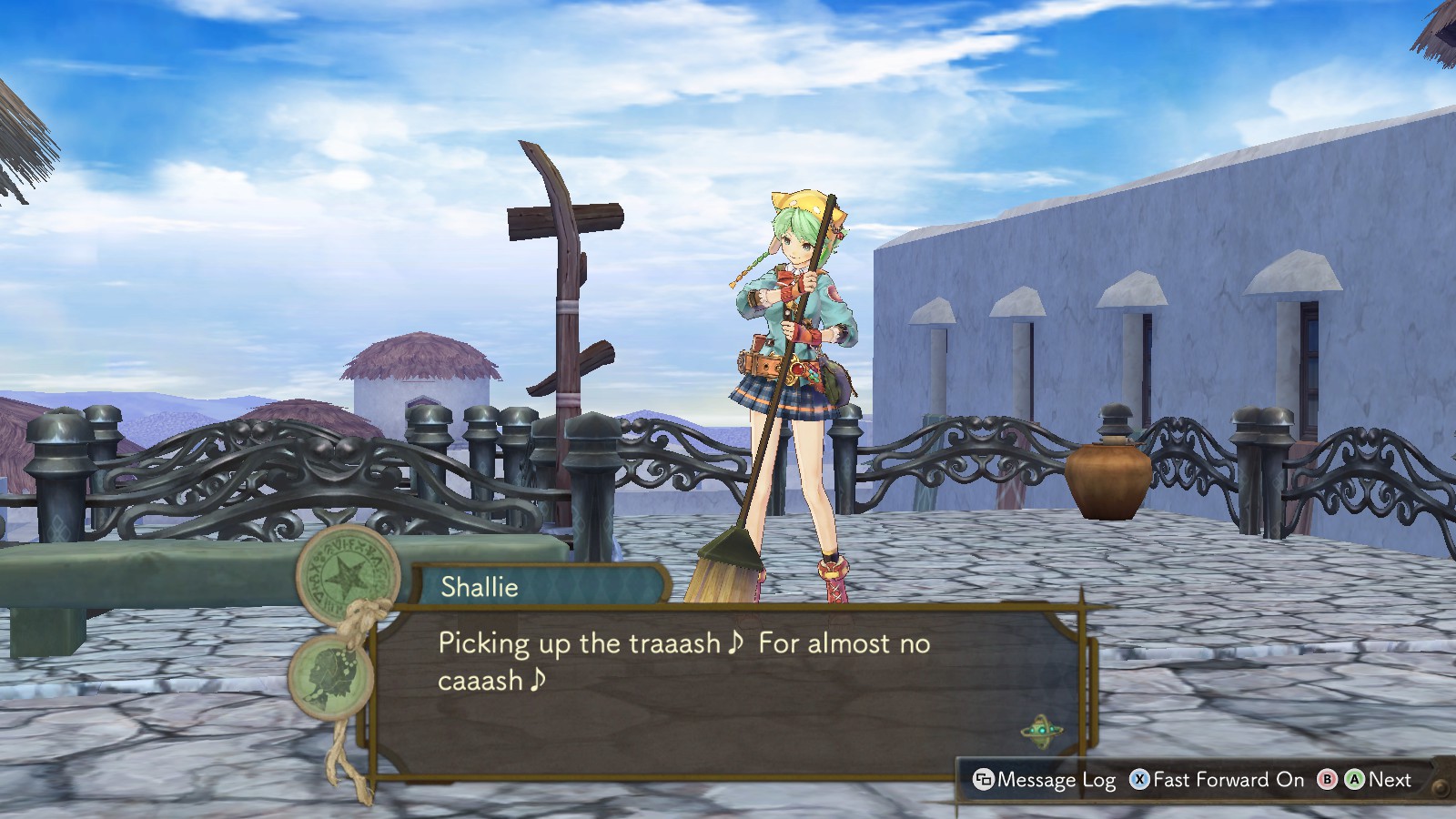
Verdict
So, should you pick up any or all of the Atelier Dusk trilogy? All three of the Atelier Dusk titles are worthy of being played at least once, and Atelier Shallie is even worth playing twice in quick succession to get the most out of the story. If you are only willing to pick up one of the titles then pick up Atelier Shallie as it basically is 1.5 Atelier games. If you can afford two then pick up Atelier Escha and Logy too. If you are looking for the simplest experience to get your feet wet in the Atelier series than there is none better than Atelier Ayesha as it gives you a little taste of all the different typical components of an Atelier title with a lot of freedom in terms of time limits and a fairly compelling and interesting story. Even if you are a veteran Atelier player, I still wouldn’t suggest skipping Atelier Ayesha though. While you could technically play the games in any order, playing Atelier Ayesha first would definitely be recommended because Atelier Escha & Logy manages to spoil the outcome of the first major plot element of Atelier Ayesha within the first few minutes of the game. With that said, each game has its own conclusion and doesn’t exactly require you to be familiar with the previous titles but there is still an overarching story line that benefits from you playing through the games in their intended order. Since I am having to place a mark on this as a trilogy rather than the individual titles, I will give the entire Atelier Dusk series a Save.
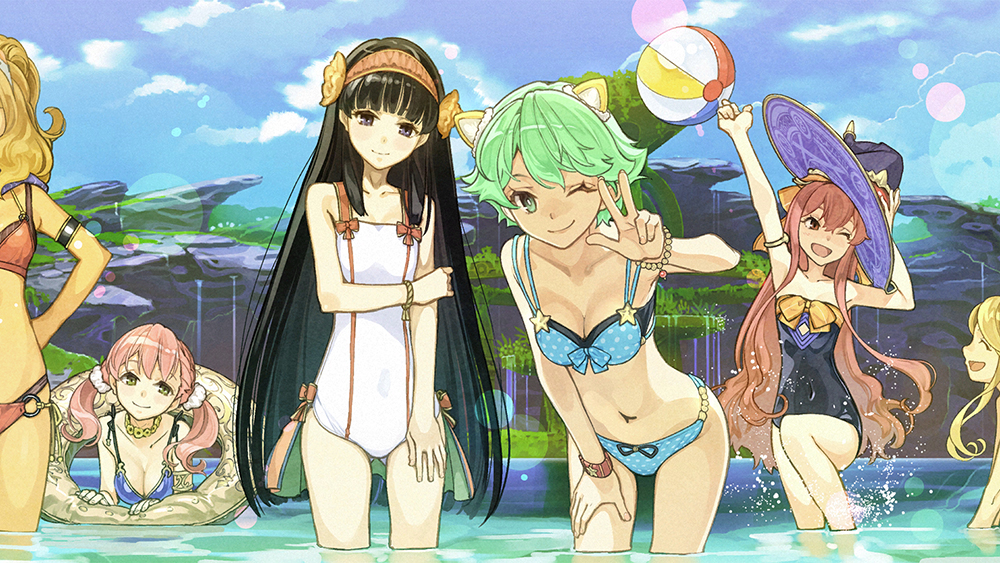

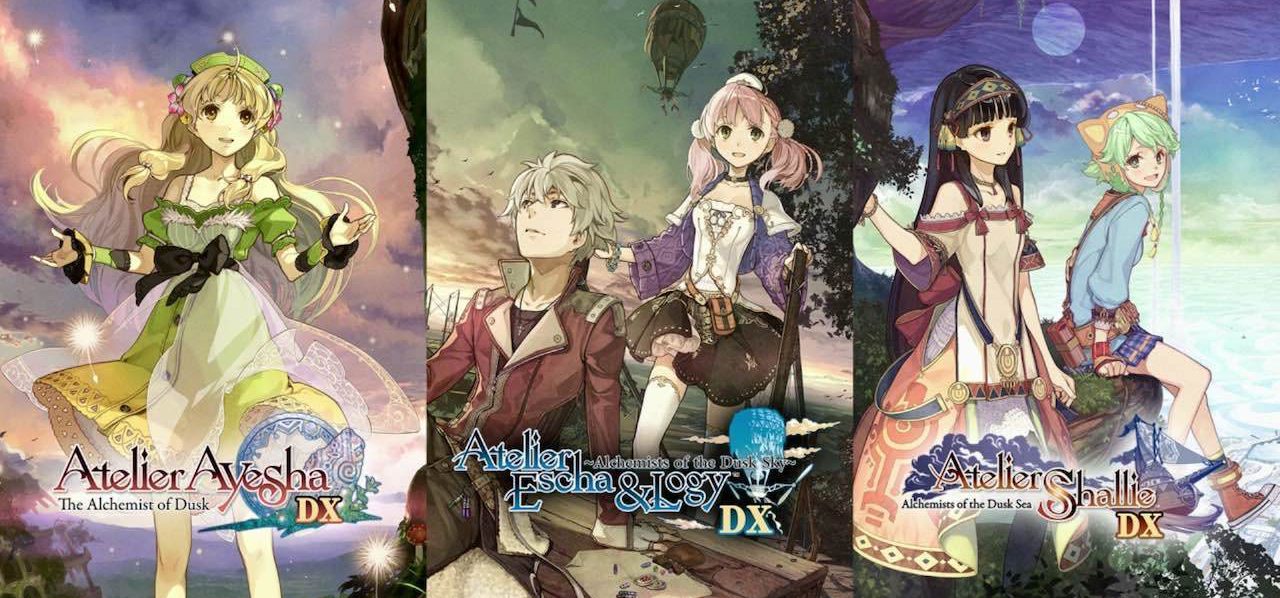









I think ayesha graphic is far better than other 2. Even opening its look so smooth. riging also a lot better in ayesha and also music especially maria. but comparing dusk, i more like arland, the story and char is cute and fun and i more like alchemy system like arland maybe because my first atelier is sophie. i not sure i want try dusk and just skip to sophie series. just try ayesha love her main story but other than that kind of bland. escha logy translate is bad not sure i want try it, and shallie i need more info before trying.